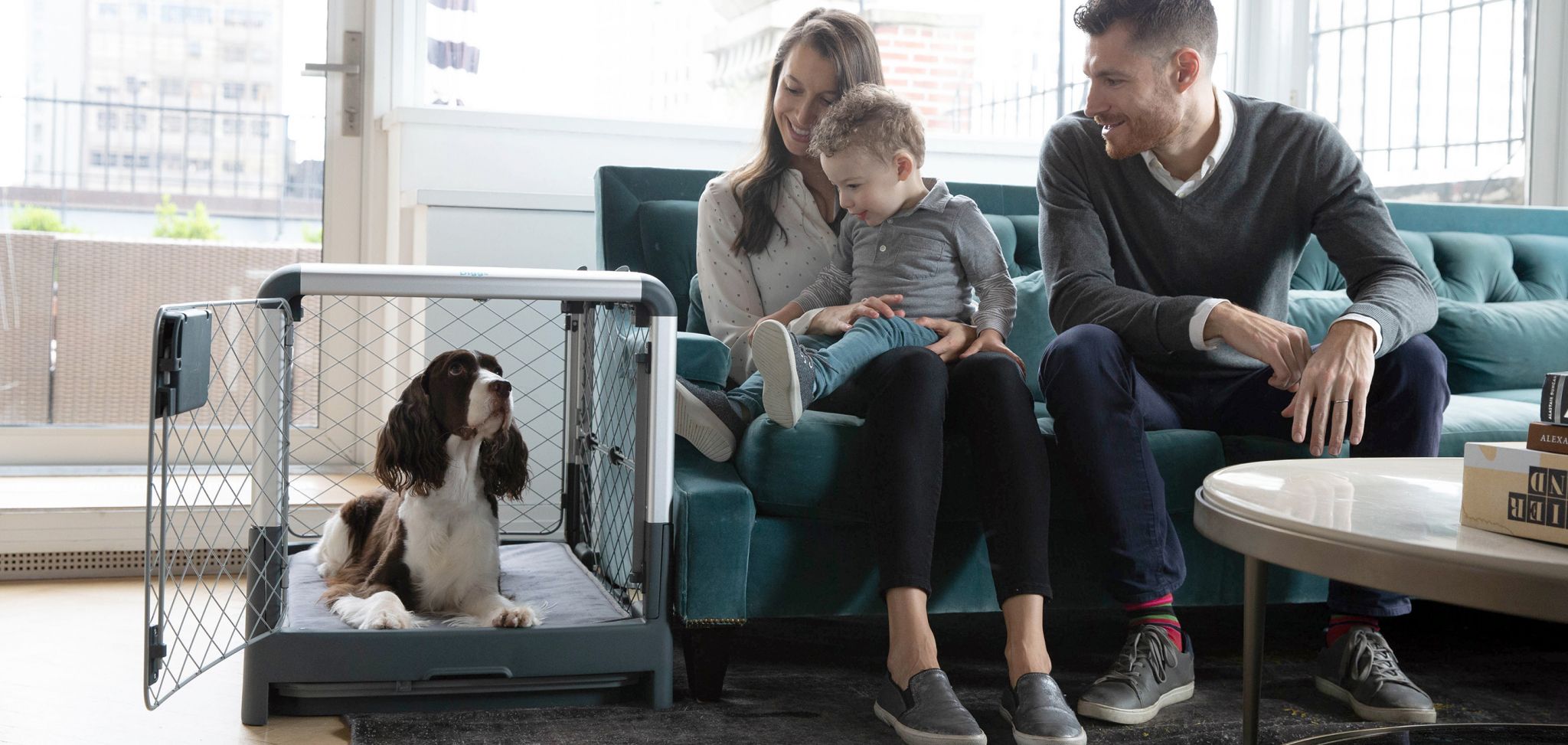A dog crate is an essential product for any pet parent. Unfortunately, pet parents don’t always know enough about dog crates to select, use and maintain them properly. Typical questions we get:
- What’s the right size?
- How big should a dog crate be?
- What material should I choose?
- How do I introduce my new puppy to a crate?
- Are there any risks to be aware of?
You may even be wondering how to collapse a dog crate. Don't worry, we will answer these questions and many more in the article below:
Selecting your dog crate
Choose the right size (bigger is not better)
How big should a dog crate be? The answer isn't so simple. Make sure the crate is only a few inches larger along each of your dog’s dimensions (length, height, width). Just enough room for your dog to be able to stand up and turn around. Dogs will relieve themselves more often in crates that are too big for them. Check out our Dog Crate Sizing Guide to help find the right crate for your pup.
Pick the right material:
Avoid fabric (soft) crates for dogs that tend to escape and remember that heavier materials (e.g., wood) are less convenient for transportation.
Plan for adulthood:
If you’re getting for a puppy, choose a crate that will fit your dog when she is fully grown to avoid buying a new crate in the future. Make sure however, the crate comes with a puppy divider or something similar to reduce the size of the crate until she’s fully grown to avoid the oversized issue discussed in the first bullet above.
Make sure the crate is suitable to your lifestyle:
You’ll have the dog crate a long time (typically 8-15 years) in a central part of your home – make sure you like how it looks and works, and that the quality is high. If you have limited space in your home or plan to travel with the crate, get something lighter and/or collapsible.
Home setup
Pick the right spot:
The crate will become your dog’s den. That means the crate should be centrally located within your home but also not completely in the middle of the action so your dog can seek refuge when she wants to. Lighting in the area should be on the darker side to create that comforting, den-like atmosphere. Also, make sure the area where you place the crate gets sufficient ventilation and does not get too hot or cold. It’s fine to use the crate in the bedroom if you follow the same principles in choosing the right location.
Follow the instructions:
Unfortunately dogs can get injured when their parents don’t setup and use crates properly, that's why it's essential to know how to collapse or fold a dog crate. The number one cause of pet injury is pet parent error. Following the crate manufacturer’s instructions (videos, manuals, etc.) is critical to ensuring you use the crate correctly and keeping your beloved dog happy and safe.
Double-check latches and hooks:
One of the easiest way for your dog to escape, or worse injure herself, is where latches were not properly secured. Once you setup the crate, make sure to double-check that all latches are secure.
Keep clear of dangerous objects:
Make sure the area immediately around the crate is free of items that could fall into the crate (e.g., through the holes) or that your dog could reach with her paws or tongue. Your dog could injure herself just trying to reach for an appealing objects or worse, choke on small objects that make their way into the crate.

The Diggs Team
We believe our dogs deserve safer, better designed pet products.
You might also like
Crate training tips, stories and inspiration
View all blogsIn Your Diggs
Share your photos with #DiggsPet and tag us @DiggsPet on IG and TikTok.



